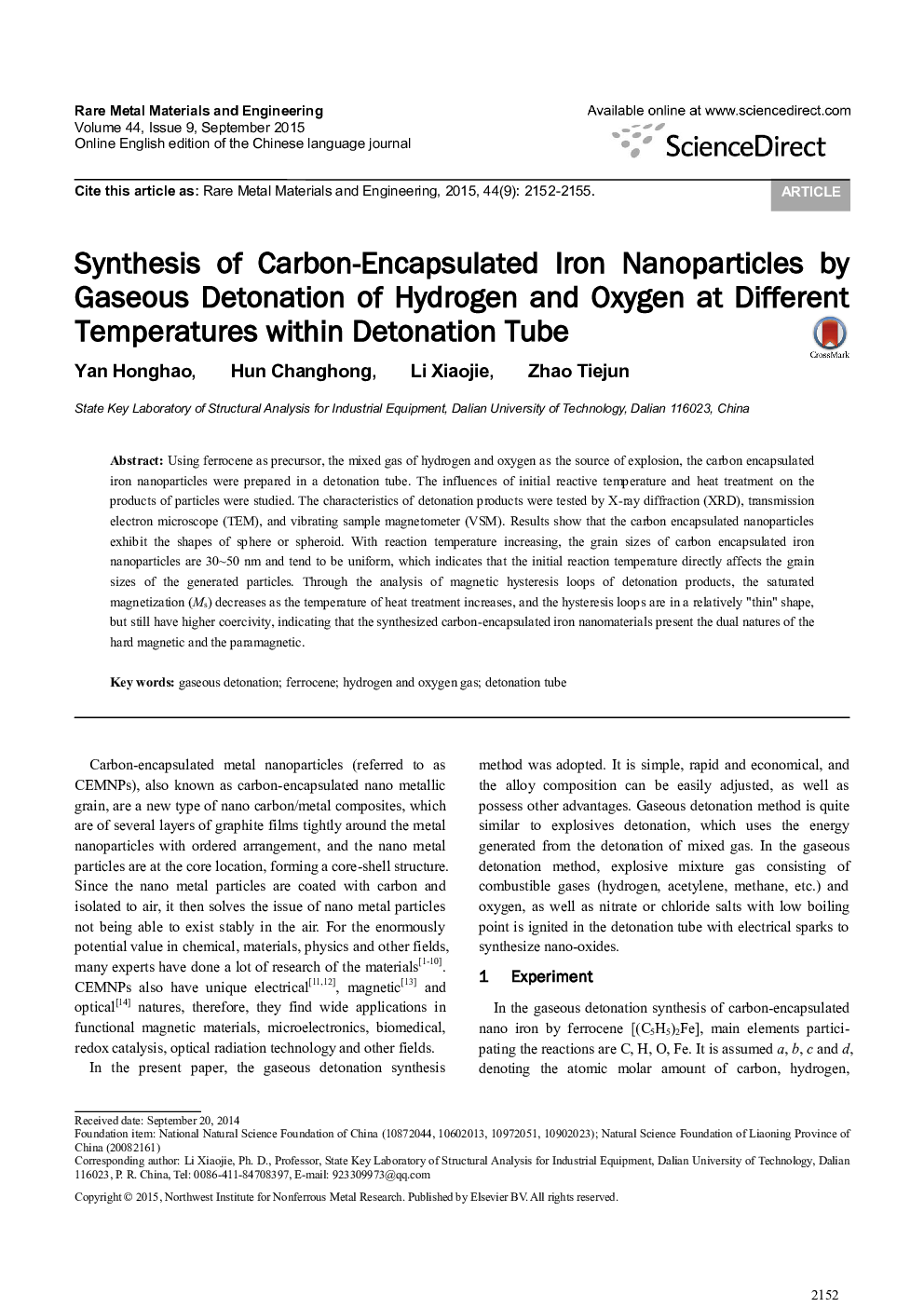| Article ID | Journal | Published Year | Pages | File Type |
|---|---|---|---|---|
| 814726 | Rare Metal Materials and Engineering | 2015 | 4 Pages |
Using ferrocene as precursor, the mixed gas of hydrogen and oxygen as the source of explosion, the carbon encapsulated iron nanoparticles were prepared in a detonation tube. The influences of initial reactive temperature and heat treatment on the products of particles were studied. The characteristics of detonation products were tested by X-ray diffraction (XRD), transmission electron microscope (TEM), and vibrating sample magnetometer (VSM). Results show that the carbon encapsulated nanoparticles exhibit the shapes of sphere or spheroid. With reaction temperature increasing, the grain sizes of carbon encapsulated iron nanoparticles are 30∼50 nm and tend to be uniform, which indicates that the initial reaction temperature directly affects the grain sizes of the generated particles. Through the analysis of magnetic hysteresis loops of detonation products, the saturated magnetization (Ms) decreases as the temperature of heat treatment increases, and the hysteresis loops are in a relatively “thin” shape, but still have higher coercivity, indicating that the synthesized carbon-encapsulated iron nanomaterials present the dual natures of the hard magnetic and the paramagnetic.
